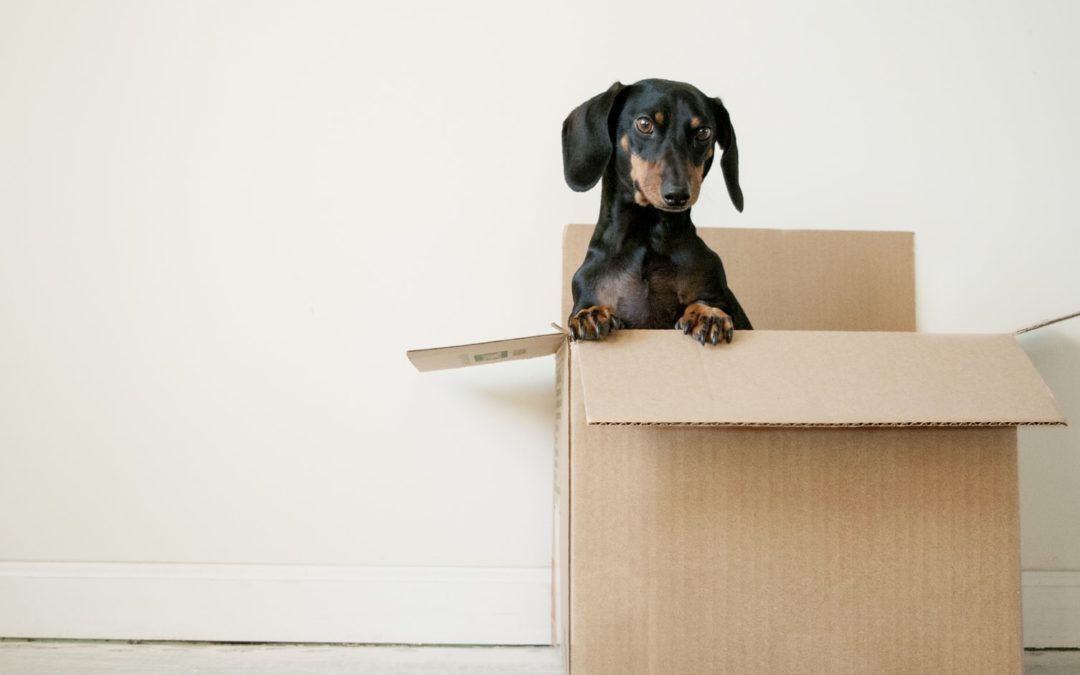We all know how stressful moving can be: the boxes, the packing, the chaos, the lack of routine. It can get a little crazy. But at least you understand what’s going on. That’s not the case for your dog or your cat.
When moving in Denver (or anywhere) with your furry friends, it’s important to keep their stress levels to a minimum in the same way it is for you. The goal is for the entire family to feel as calm and at ease as possible. It’s not as hard as you may think.
Be prepared to move your pets by following our guide of easy-to-manage tips and tricks.
Before You Move Your Pet(s)
Because dogs and cats have incredible instincts, they’ll understand that something out of the ordinary is happening, before the actual moving day is upon you all.
To help circumvent this, we recommend following a few rules that will keep your pets feeling confident and secure during this process- right from the start.
- All the scents: We know that animals have a powerful sense of smell, so cater to that by keeping your house full of the usual scents they’re used to. Spray your normal deodorizers or perfume, light the same candles, make the food you usually make. All of this will help to stabilize your pet’s anxiety, even in a maze of boxes and disarray. You should also allow these scents to settle into your new home prior to bringing your pet into it, if possible.
- Spend some time together: Even in the hectic atmosphere, spend some quality time with your pet. It can be in or out of the house, but give them some extra love. This is a good way to make sure your dog still understands his commands. He may need those during and after your move. So get a little practice in.
- Crating: If your pet is going to need to be crated during or after your move, it’s a good idea to start that training before you actually need to use it. Make it fun with treats and toys, you don’t want to contribute to their stress by introducing something foreign that could come off as a punishment to them.
- Create some useful chaos: Before you actually start packing (maybe a month or a few weeks prior), set up some boxes here and there, leave out some bubble wrap and tape. Get your pets used to seeing these things, before your house gets over-run with them. They’ll feel less stressed when the big packing days are upon them.
- Prepare them (and you): If you’re moving far away and need a new vet, find one before your move, just to play it safe. Speaking of safe, make sure there are no dangers in the new home that will hurt your pet (think hazardous things like poisons or traps, nails or other sharp objects, holes in walls and fences, etc.). You should also be sure your pet is legal for their new city, so make sure you have licensing, tags, and shots as needed. Don’t forget to update their microchips with your new information, too.
During Your Pet’s Move
Moving day is always an interesting day, so keep you pet in mind, even in the disorder. First and foremost, safety should be your concern. Doors are often left open. Is your cat strictly an indoor cat? If so, this can get ugly. Strangers may be coming in and out of the house, will your dog bite them? Again, this can get ugly.
Here are a few things to help you control the situation:
- Get a sitter: Ask friends or family to watch your pet and if that’s not a possibility, consider boarding them for the afternoon, or locking them in a room where the movers have finished. It’s best to keep them away from the frenzy.
- Treats, toys, clothes: Dogs and cats alike love their special treats and love to play, so hook ‘em up with their favorites of both- whether staying home, or heading to the boarding house for the day. Some pets feel better snuggled in blankets or shirts (Thunder Shirts can come in handy here), if yours is one, offer your pet that security blanket. If your pet is going away from the house, spray your perfume on the shirt they love most before putting it on them.
- Collars and tags: Even if your pet doesn’t normally wear a collar with a tag, you may want to get one for this occasion- just in case they run out the door. Have your name and phone number on it so you can get your fuzzy buddy back quickly.
- Food and medication: Depending on the way you’re moving (airplane, long road trip, down the street), you may want to medicate your pet for relaxation purposes. You’ll have to see your vet for assistance in doing this, as you don’t want to harm your pet in any way. They may need to have a full belly prior to taking any medication, so be sure your clear on what to do, before you offer your pet the meds.
- Stops on the way: If you’re making a long road trip of your move, have some stops planned if you can. You don’t want to have to stop on the side of the highway for your pet to go to the bathroom (all the safety issues with that!), so look into some parks or rest stops before the big move. And if your cat has never used a leash before, you may want to practice that before your trip, so he can get some exercise in when you stop, too.
After You’ve Moved Your Pets
Adjusting to a move can be difficult for even the most prepared, so help your pet adjust as smoothly as possible, by making their new home, feel like their old home.
Start with these tricks:
- Show them around: With the leash on, walk your dog around the inside and outside of the house, while petting him and speaking calmly. Give him time to take in all the new smells (don’t forget to spray your perfume or light your usual candles, to help your pet know this is their new place and he should feel comforted here). With cats, let them go through the new home room by room. Enter a room with them and if you can close the door, go ahead and do that so the kitty doesn't dart out before his inspection is complete- you don’t want him to feel more overwhelmed than necessary.
- The comforts of home: Put out their bowls of food and water right away and take them to see where they are (preferably in a similar location as their last home). If a litter box is needed, do the same. You should also do this with a toy basket, blankets and beds they use, or any other comforts they had previously. This will allow for familiarity, providing warmth and well-being. And never underestimate the power of treats! Be sure you have them on-hand.
- Stay close to them: Don’t drop them at the new place and run back out right away. Let them see you there and know that you’re not leaving them. When you do start leaving, be sure your pets are indoors and don’t go away long, build up to it as gradually as you can. The more you’re home with them, the faster they’ll acclimate.
- Be “normal”: Try to stick to their old routines (play time, food time, walks, etc.) and they’ll follow suit naturally. Consistency is loved by all- humans and animals alike.
Conclusion
Moving is stressful for all, but you can certainly minimize your stress, by minimizing your pet’s stress. Be conscious of them, even through the turbulence and you’ll all get through it just fine. However, if you find that your pet isn’t adapting well, take him to the vet to be sure there aren’t other pressing matters.
Providing love, encouragement, and patience will go a long way before, during, and after your move. Don’t be too hard on your pet when it comes to accidents of any kind during any of these phases, they’re going through a lot, too, and it will take about three weeks for them to feel settled.
Your pet will learn from you, so once you find the peace in your new home, he’ll do the same.
Lots of luck on moving with your pet(s)! If you want any advice on this or anything moving, give us a call!







